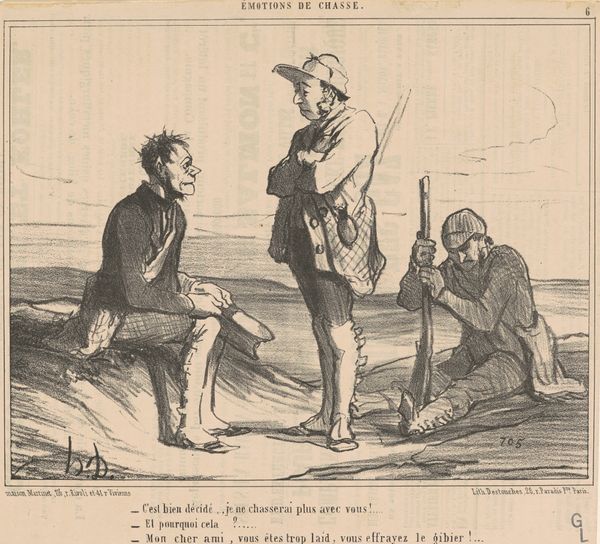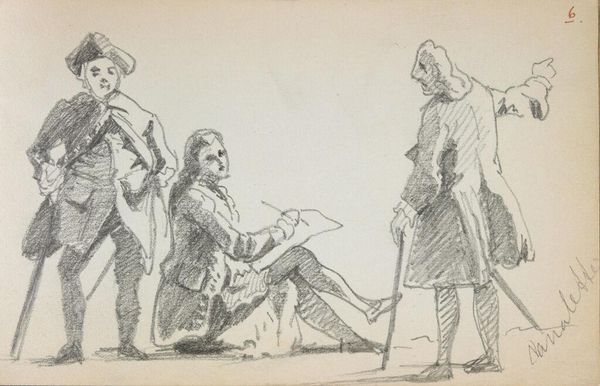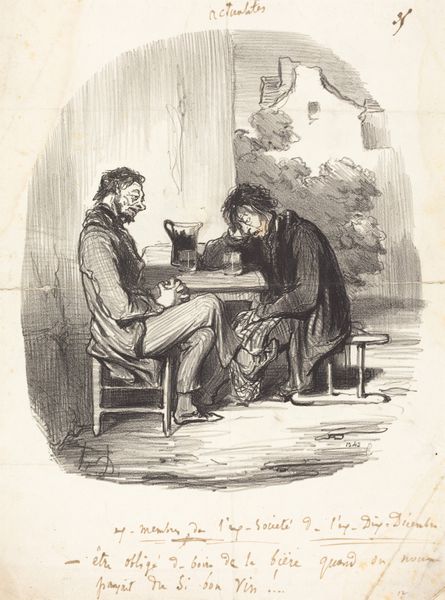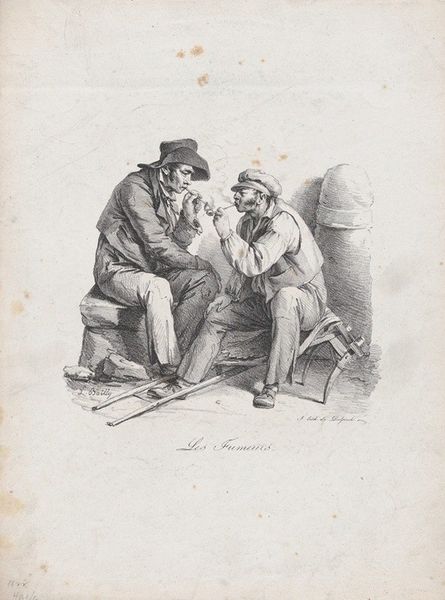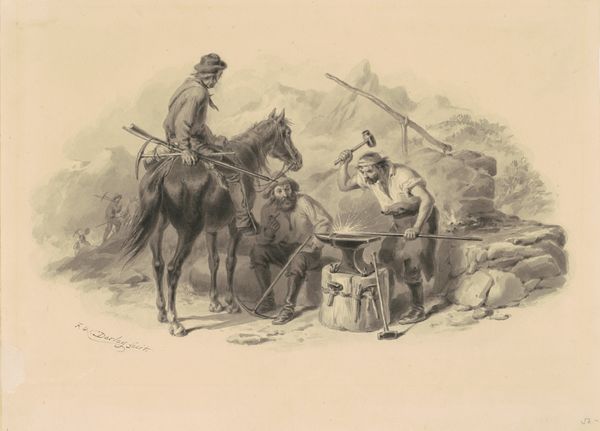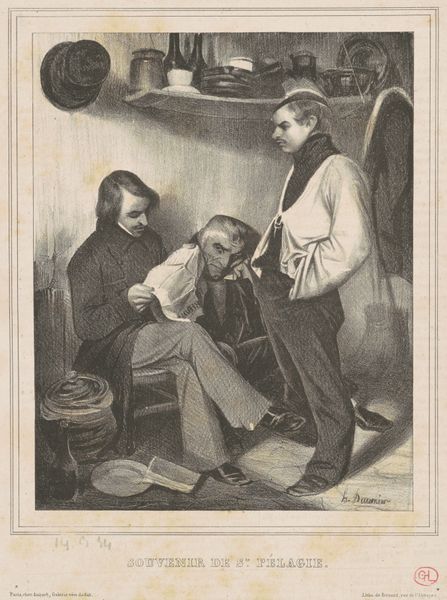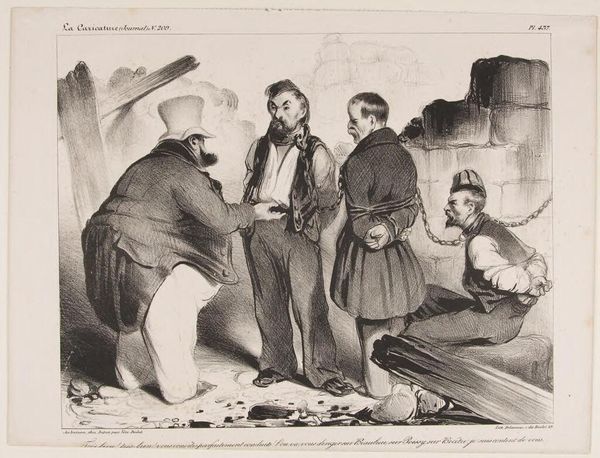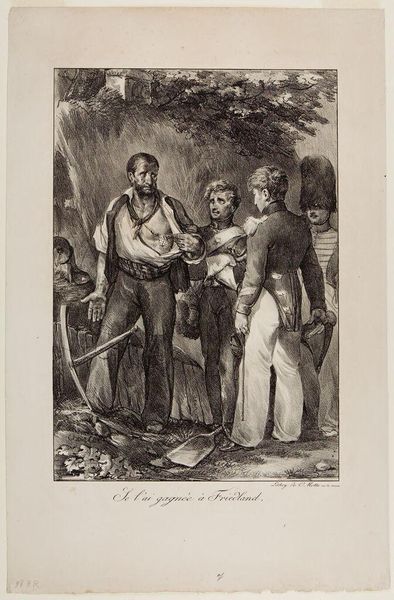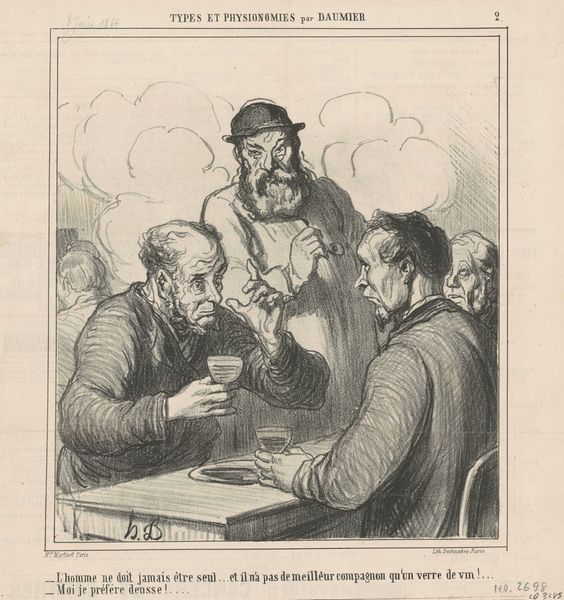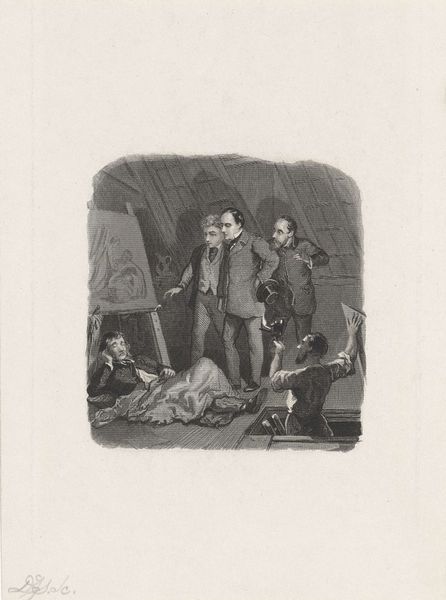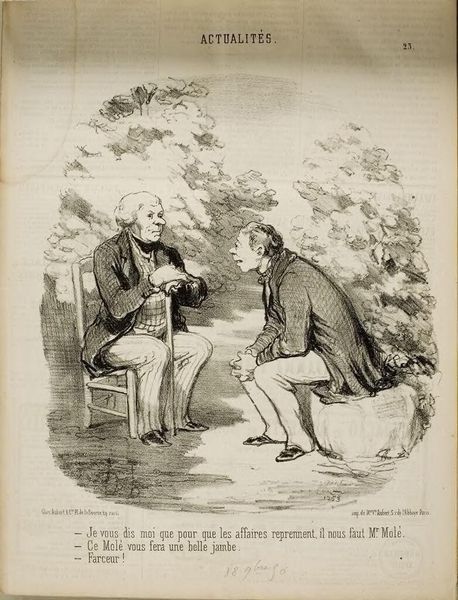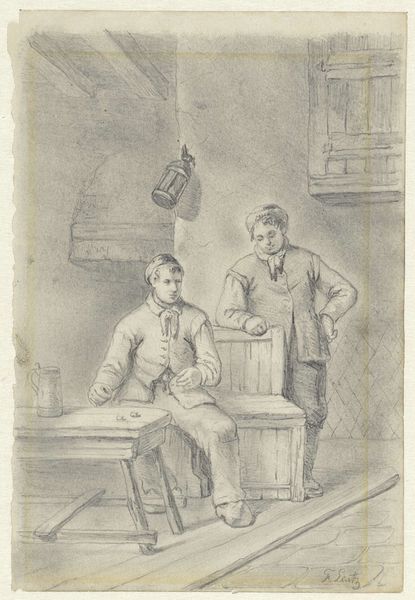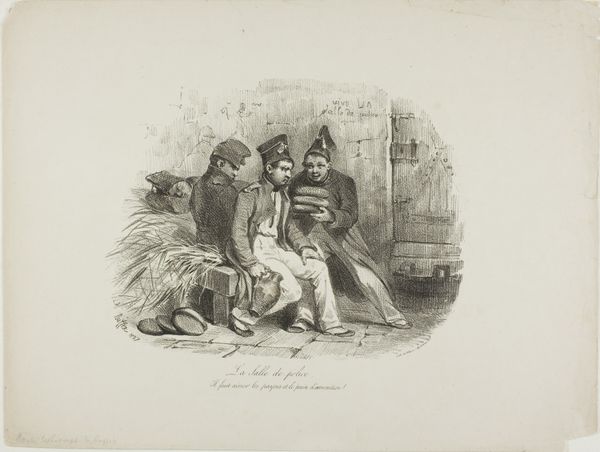
drawing, pencil
#
portrait
#
pencil drawn
#
drawing
#
charcoal drawing
#
pencil drawing
#
romanticism
#
pencil
#
portrait drawing
#
genre-painting
Copyright: Public domain
Curator: Here we have Josef Kriehuber's 1846 drawing, "A Morning with Liszt (Hungarian Composer)." I am struck by how he captured a palpable mood of creative inspiration through subtle gradations of light and shadow using pencil. Editor: My first impression is one of intimate artistic communion. Look at the grouping around Liszt at the piano—it speaks to a tight-knit community deeply engaged with its creative energies, yet it also feels like a display of patriarchy with men in privileged positions, as other genders are excluded. Curator: That's a fascinating point, placing it within its patriarchal era. But let's look closer. What do you see in the very imagery and iconography used to depict Liszt at the center? Is he presented as a divinely inspired figure or something else? Editor: I find interesting visual clues in this artistic meeting of the minds, beginning with the figure seated far left. He rests his head on his hand, looking away—a representation, perhaps, of creative ennui. Opposite him is a musician holding his instrument as if to suggest, perhaps, a kind of performance about to unfold, representing action. And hovering above the pianist’s sheet music? Disembodied faces that feel as if to hint the muses. The work’s overall message is about a symbolic artistic awakening. Curator: Those archetypal visual cues definitely underscore Liszt's role. Given Liszt's public persona, and Kriehuber’s socio-political awareness at the time, it raises an intriguing possibility: does this piece perhaps gently critique the then-contemporary Romantic image of the lone genius as essentially exclusionary to other demographics beyond powerful white males? The choice of rendering him amongst so many men hints the importance of understanding him not in isolation but from the point of view of collaboration in such an historical frame, given the Romantic era and patriarchy’s place in history. Editor: And don't you think, placing those ideas in the historical framework, makes us think of the symbolism in musical creation, or better still, music, performance and muses? Curator: The layering here reveals so much of the era's contradictions regarding creativity. A seemingly simple depiction of artistry amongst men conceals deeper currents when considering issues such as class, patriarchy, or other dynamics in their historical settings. Editor: This certainly offers more complexity than one might expect at first viewing—all because the iconographical symbolism offers insight that may only appear at first to the most dedicated of art connoisseurs, such as we.
Comments
No comments
Be the first to comment and join the conversation on the ultimate creative platform.
